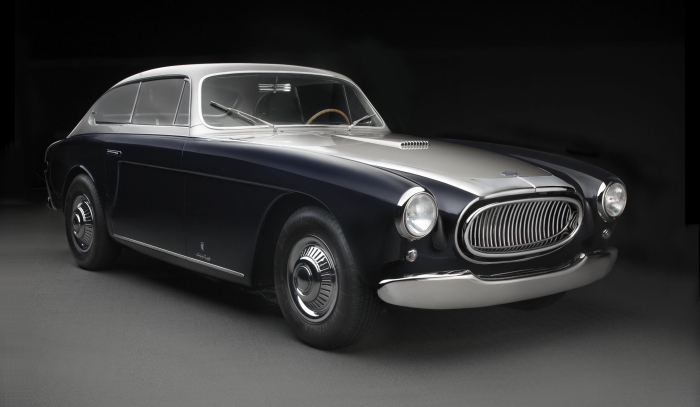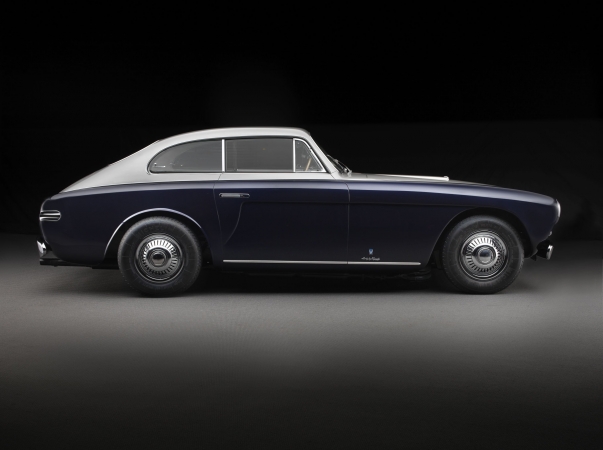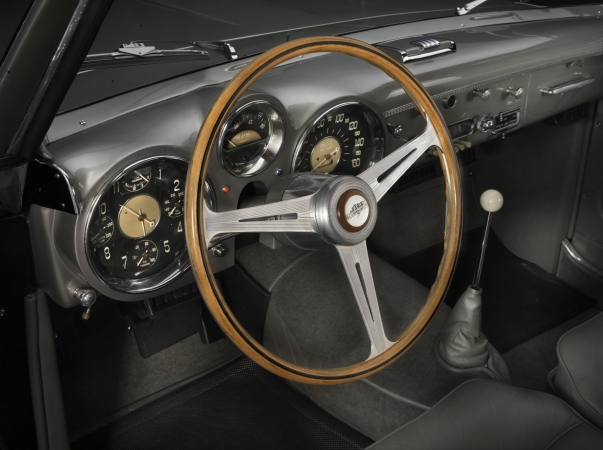Lender: The Collier Collection @ The Revs Institute, Naples, Florida

1952 Cunningham C3 Continental. The Collier Collection @ The Revs Institute ®. Image © 2016 Peter Harholdt 
1952 Cunningham C3 Continental. The Collier Collection @ The Revs Institute ®. Image © 2016 Peter Harholdt 
1952 Cunningham C3 Continental. The Collier Collection @ The Revs Institute ®. Image © 2016 Peter Harholdt 
1952 Cunningham C3 Continental. The Collier Collection @ The Revs Institute ®. Image © 2016 Peter Harholdt
Sponsored by: Mark Lambert & Lambert Auto, Nashville
The Cunningham Italian-American C3s were big, powerful, and very fast. In 1953 Arthur Drexler, curator of architecture at the Museum of Modern Art in New York, named the Cunningham C3 one of the “10 Best Contemporary Automobiles.”
Briggs S. Cunningham Jr., the famed America’s Cup yachtsman, aviator, and auto racer, nearly won the grueling 24 Hours of Le Mans race in the early 1950s, when he developed and fielded a personally financed private racing team that ran a series of Chrysler Hemi V-8-powered sports cars. His goal was to win the French racing classic in an American car with a US production engine. In 1950 he entered two modified Cadillacs at Le Mans. They finished tenth and eleventh against many of the world’s premier, purpose-built sports models.
To enter the next contest with a car bearing his name, he was required by the French racing authorities to manufacture twenty-five cars in 1952 and fifty the following year. So Cunningham assembled a talented team of constructors and drivers and set up shop in West Palm Beach, Florida. The production models, called C3s, would satisfy the manufacturing requirements and help to finance Cunningham’s expensive racing operation. Cunningham and his small team, led by Phil Walters and Briggs Weaver, developed both coupes and convertibles. The C3’s flush-fitted, flip-out door handles were a lovely Italian touch, and the car’s deeply sculpted body sides provided a natural break for two-tone paint schemes, which helped make the car appear thinner and more svelte. The design gave Cunningham instant credibility.
Sold new in 1953, this C3 was bought by a California man and then changed hands several times. It was road tested by Road & Track’s editor, John Bond, and then repurchased by Briggs Cunningham for his personal transportation. A plaque on the dash reads “0–60, 6.2 sec; 0–100, 15.4 sec.” Sadly, at a then-pricey $10,000–$12,000, C3s never caught on. Total production was only eighteen coupes and nine convertibles. After five years of red ink mixed with racing fuel, Cunningham retired his manufacturing operation and became Jaguar’s racing representative in North America. Although its presence on the market was short lived, the existing cars are highly respected and valuable today.
—Adapted from the exhibition catalogue essay by Ken Gross
